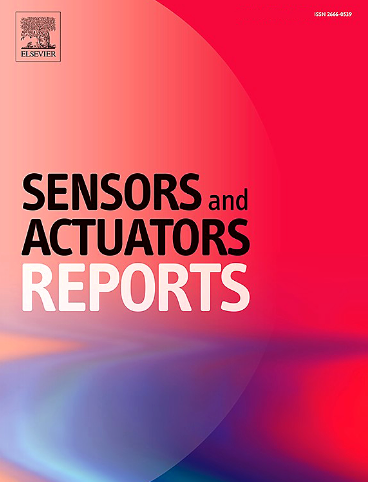一种基于石墨烯集成卡普顿的柔性高灵敏度等离子体尿酸传感器
IF 7.6
Q1 BIOTECHNOLOGY & APPLIED MICROBIOLOGY
引用次数: 0
摘要
高嘌呤饮食中最常见的自然废物之一是尿酸,尿酸通常由人体肾脏过滤。过量摄入和延迟排泄尿酸会破坏血尿酸水平。正常尿酸水平低于6.8毫克/分升,异常变化会导致多种健康问题,包括肾结石和痛风等。现有的尿酸检测生物传感器存在灵敏度低、选择性差、保质期短、可重复性差等问题。基于Kretschmann配置的等离子体传感器是解决这一问题的突出候选器件,但由于涉及特殊的玻璃衬底(如SF11和BK7),现有的等离子体芯片价格昂贵。这项工作主要集中在用低成本和柔性的卡普顿芯片取代SF11玻璃传感芯片,该芯片与SF11具有相同的折射率,而不影响传感器的灵敏度。此外,为了提高卡普顿等离子体芯片的灵敏度,它们被集成了1 - 3层石墨烯。这些石墨烯集成柔性(GiF)等离子体芯片与尿酸酶功能化,以开发分子选择性尿酸传感器点护理检测。该GiF芯片在0 ~ 200μM和200 ~ 1000μM范围内的最大灵敏度分别为0.0810nm/μM和0.0171nm/μM,对尿酸的检出限为11.450μM。对照实验也证明了传感器的重复性、稳定性和选择性。GiF SPR芯片在开发便携式和可穿戴生物传感器方面具有很大的潜力。本文章由计算机程序翻译,如有差异,请以英文原文为准。

A graphene integrated Kapton based flexible and highly sensitive plasmonic sensor for uric acid sensing
One of the most common natural waste products from diets high in purines is uric acid that is commonly filtered by human kidneys. Excessive consumption and delayed excretion of uric acid can disrupt blood uric acid levels. Abnormal variations in the normal uric acid level, which is less than 6.8 mg/dL, can lead to several health issues, including kidney stones and gout, etc. Available biosensors for uric acid detection have various issues such as low sensitivity, poor selectivity, shorter shelf life, and poor repeatability. Kretschmann configuration-based plasmonic sensors are prominent candidates for resolving the issues but the available plasmonic chips are expensive because of the involvement of special glass substrates, such as SF11 and BK7. This work mainly focuses on the replacement of SF11 glass sensing chips with a low-cost and flexible Kapton chip that shares the same refractive index as SF11, without compromising the sensor’s sensitivity. Moreover, to enhance the sensitivity of the Kapton based plasmonic chips, they were integrated with 1 – 3 layers of graphene. These graphene-integrated flexible (GiF) plasmonic chips were functionalized with uricase enzyme to develop molecule selective uric acid sensors for point-of-care detection. The developed GiF chips achieved a maximum sensitivity of 0.0810nm/μM and 0.0171nm/μM in the range 0 to 200μM, and 200 to 1000μM, respectively, with a limit of detection of 11.450μM for uric acid. Controlled experiments were also performed to demonstrate the repeatability, stability, and selectivity of the sensors. GiF SPR chip presents its strong potential in developing portable and wearable biosensors.
求助全文
通过发布文献求助,成功后即可免费获取论文全文。
去求助
来源期刊

Sensors and Actuators Reports
Multiple-
CiteScore
9.60
自引率
0.00%
发文量
60
审稿时长
49 days
期刊介绍:
Sensors and Actuators Reports is a peer-reviewed open access journal launched out from the Sensors and Actuators journal family. Sensors and Actuators Reports is dedicated to publishing new and original works in the field of all type of sensors and actuators, including bio-, chemical-, physical-, and nano- sensors and actuators, which demonstrates significant progress beyond the current state of the art. The journal regularly publishes original research papers, reviews, and short communications.
For research papers and short communications, the journal aims to publish the new and original work supported by experimental results and as such purely theoretical works are not accepted.
 求助内容:
求助内容: 应助结果提醒方式:
应助结果提醒方式:


